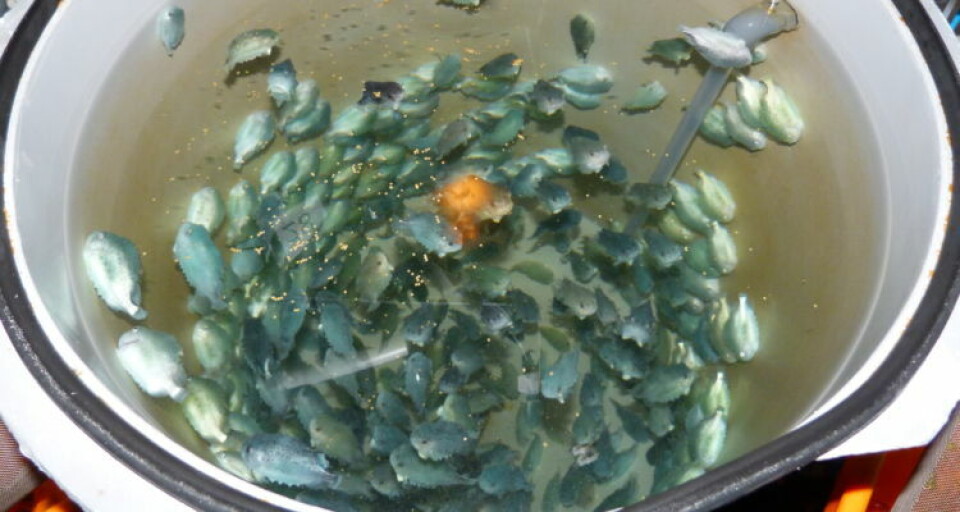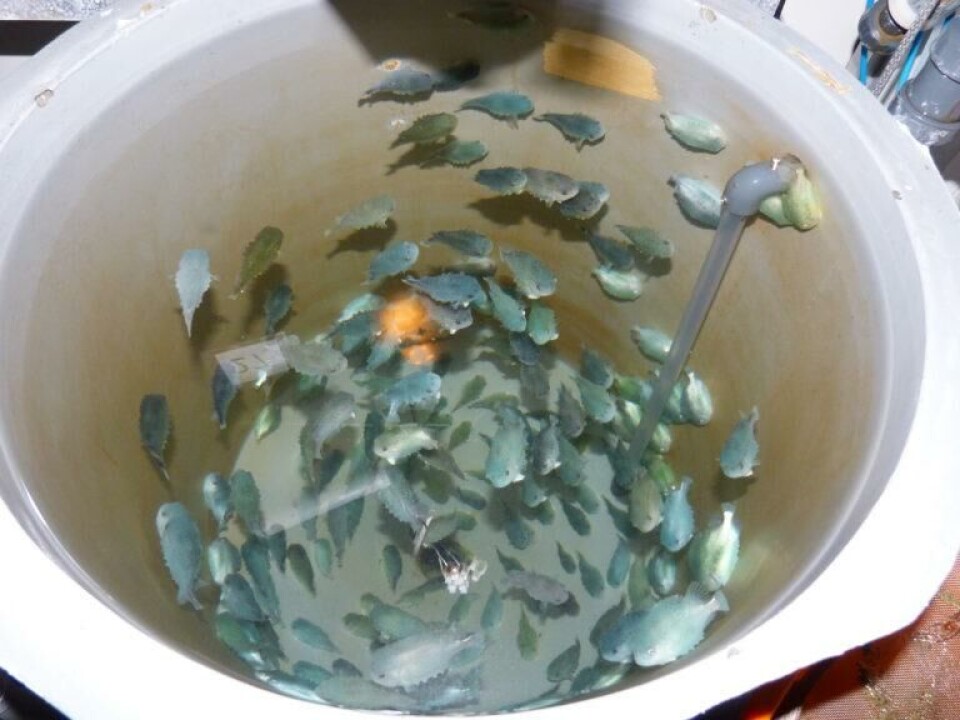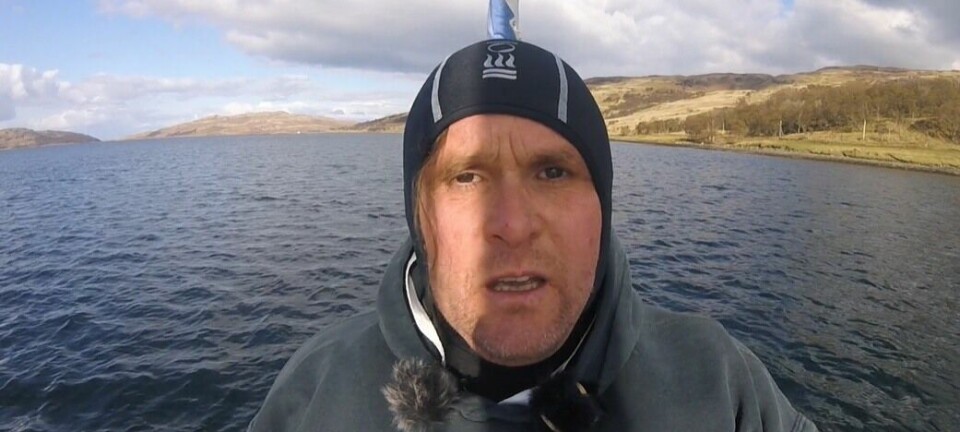
Lumpfish happy in a crowd, study reveals
New research shows that neither the growth nor survival of lumpfish is affected by high density in tanks, findings that have significance for cleaner fish health.
Norwegian researchers examined the effect of different densities of lumpfish on survival, growth and welfare. The experiments was conducted in a 150-litre tank with a conical bottom. Fish weighing five grammes were started in three different densities: 7.5, 15 and 30 kg/m³.

When the biomass was doubled, i.e. 15, 30 and 60 kg/m³ the fish were weighed, measured and examined for various welfare parameters. Then the biomass was reduced to its original density, and the doubling process began again.
This was repeated over four periods, and in the last period the highest fish density 85 kg/m³.
Tail biting
"Lumpfish seem to cope well to being close together without causing adverse effects. We saw little, but a bit of tail biting in the tanks with the lowest densities," senior scientist Ingrid Lein, from Nofima, who conducted the experiment, told kyst.no.
The occurrence of tail biting was highest in the vessel with the lowest density (2.6 per cent tail biting compared to 1.9 and 0.6 per cent in the medium and high density).
No difference in survival or growth
Lein said they looked at many welfare indicators, but found no difference in either survival (95-98 per cent), or in growth of the fish at different density.
She noted that current lumpfish farming practice does not often use such high densities as those in the experiments.

"Not many people run the fish so close and have a lot of sorting, etc. One element in the experiment is that we have used small vessels so that the feed becomes available to all the fish. It's something to think about in production. The fish have a special behaviour, sticking to several places, usually on the side of the tank, and then it is important to get a good spread on the feed to reach them all," explained Lein.
No standardised method
She pointed out that there is currently no standardised method of production of lumpfish, as there are large variations in tanks, and operating procedures, tank design and feeding.
"This is common when working with a new species, and there is often some trial and error at first. However, we see that as long as the fish get clean water, enough oxygen (between 90-100 per cent), and enough and good feed, welfare is good."

When it comes to classifying for operational welfare indicators, such as one might do with salmon, this has not been entirely easy.
External indicators of welfare
"One does not see the same effect on increased cortisol in the blood as in salmon, and there is a different effect on the cleaner fish than in salmon. For lumpfish it's often the external things like fins and skin that give indications about the welfare," added Lein.
The Rensvel project, funded by the Norwegian Seafood Research Fund, FHF, has two main objectives:
1) Developing robust knowledge-based operational welfare indicators for lumpfish.
2) Find the limit for critical environmental factors (such as light, density, oxygen).
Åsa Espmark from Nofima is the project manager.




















































